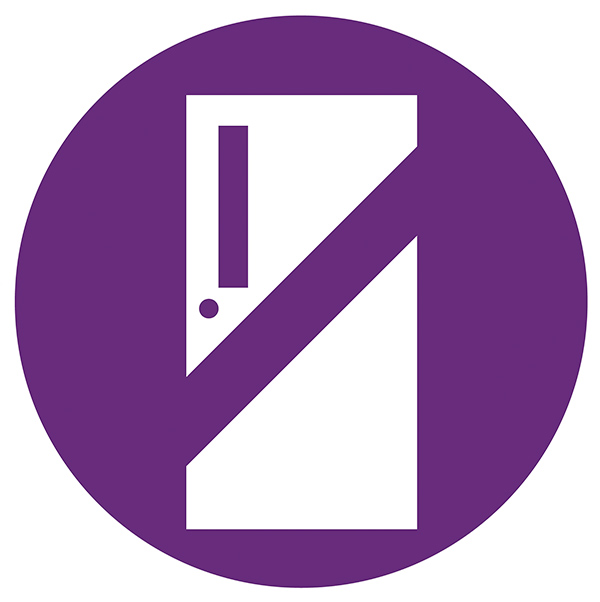TCA EMERGENCY GUIDE FOR PARENTS
Emergency Guide Parents
Trinity Christian Academy is committed to providing a safe environment for students, staff, and visitors. We work closely with safety officials – police, fire, emergency medical services, and public health – in order to ensure our school is well prepared for an emergency. We have developed a comprehensive plan that covers a wide variety of emergencies and serves as a guide to help staff and our public safety partners respond swiftly should a crisis occur in our school. Should a school emergency occur, a parent can get important information and directions through TCA communications.
Renweb via TCA Email, Facebook
Trinity Christian Academy uses Renweb via TCA Email and Facebook as part of its ongoing effort to enhance student/staff safety, security, and communications. Renweb will be used to contact parents via email in a variety of situations ranging from severe weather and power outages to other emergencies that may cause a school to evacuate, relocate, or lockdown. Every parent who has a child attending Trinity Christian Academy is automatically signed up to receive communication through Renweb. However, it is up to you to update any changes regarding email, phone numbers or additional emergency contacts within the system. For the Renweb Service to be effective, Trinity Christian Academy must have accurate contact information for all parents or guardians within Renweb. Without current contact information, Renweb will not be able to make the necessary contacts in the event of an emergency.
WHAT PARENTS SHOULD DO TO PREPARE FOR A SCHOOL EMERGENCY
- Provide accurate emergency contact information to your child’s school and notify the school if your emergency contact information changes.
- Accurately identifying the person(s) who is authorized to pick up your child if there is a school or community emergency is essential to your school’s emergency response. Never open any door to your school campus for someone outside the school to enter the building, even if that person is known to you (including a teacher). Access to our schools is strictly enforced, and those who do not have access to the building must go through to the front entrance and follow visitor management or access procedures.
- Speak with your child about potential emergency situations at school. Emphasize the importance of listening and following directions during all emergency drills, including fire, evacuation, secure, and lockdown drills. Also, encourage your child to report strange, suspicious, or unusual activity to a teacher, administrator, TCA staff member.
WHAT TO DO DURING A SCHOOL EMERGENCY
- If there is an emergency at TCA, wait for official instructions that will be communicated using Renweb. This telephone/email message will inform you of what has happened and what you should do (if anything).
- Do not call the school or school employees. Phone lines and staff are needed for emergency response efforts.
- Do not go to the school unless instructed to do so. During emergency situations, school parking lots may be designated evacuation locations, or they may be within the emergency area and unsafe for anyone except first responders. Additionally, roads clogged by traffic may prevent emergency vehicles from getting to an emergency.
- Students will be kept in school, at a neighboring school, or other shelter until the end of the school day if possible. If you are asked to pick up your child, the reunification site and the time when you can meet your child will be announced by school officials using Renweb and TCA Facebook page.
- When you go to the reunification site, bring a picture I.D. (e.g., driver’s license, passport, etc.) and check in with school officials. Students will only be released to parents or guardians who have acceptable identification and who are named on the student emergency information card. If a legal guardian cannot pick up a child, the child will remain at the reunification site.
SAFETY TERMS AND PROCEDURES
In the event of an emergency at your child’s school, it is important to know these terms.
 HOLD – The HOLD command is called to clear hallways, even during class changes. The public announcement for HOLD is: “Hold in your room or area. Clear the Halls.” The HOLD command may occur to allow emergency medical services and first responders a clear path while responding to a medical emergency and to prevent students and staff from unnecessary exposure to the incident.
HOLD – The HOLD command is called to clear hallways, even during class changes. The public announcement for HOLD is: “Hold in your room or area. Clear the Halls.” The HOLD command may occur to allow emergency medical services and first responders a clear path while responding to a medical emergency and to prevent students and staff from unnecessary exposure to the incident.
 SECURE – The SECURE command is called when there is a threat or hazard outside the school building. The public announcement for SECURE is “Secure! Get Inside. Lock Outside Doors. No One In – No One Out.” The SECURE command may occur during violence or criminal activity in the immediate neighborhood or a dangerous animal on the playground. The SECURE command uses the security of the physical facility as protection.
SECURE – The SECURE command is called when there is a threat or hazard outside the school building. The public announcement for SECURE is “Secure! Get Inside. Lock Outside Doors. No One In – No One Out.” The SECURE command may occur during violence or criminal activity in the immediate neighborhood or a dangerous animal on the playground. The SECURE command uses the security of the physical facility as protection.
 LOCKDOWN - The LOCKDOWN command is called when there is a threat or hazard inside the school building. The public announcement for LOCKDOWN is: “Lockdown! Locks, Lights, Out of Sight!”. A LOCKDOWN uses classroom security to protect students and staff from threats inside the building.
LOCKDOWN - The LOCKDOWN command is called when there is a threat or hazard inside the school building. The public announcement for LOCKDOWN is: “Lockdown! Locks, Lights, Out of Sight!”. A LOCKDOWN uses classroom security to protect students and staff from threats inside the building.
 EVACUATION – The EVACUATE command is called when students need to be moved from one location to another. The Evacuate protocols demand students and staff move in an orderly fashion to a predetermined evacuation assembly point. Fire drills are considered evacuation drills. The public announcement for evacuation is: “Evacuate! To a Location”. For instance, “Evacuate! To the Flag Pole. Evacuate! To the Flag Pole." Students will remain at the evacuation location until the “All Clear'' command is given by Administrators, officers, or security.
EVACUATION – The EVACUATE command is called when students need to be moved from one location to another. The Evacuate protocols demand students and staff move in an orderly fashion to a predetermined evacuation assembly point. Fire drills are considered evacuation drills. The public announcement for evacuation is: “Evacuate! To a Location”. For instance, “Evacuate! To the Flag Pole. Evacuate! To the Flag Pole." Students will remain at the evacuation location until the “All Clear'' command is given by Administrators, officers, or security.
 SHELTER – The SHELTER command is called when the need for personal protection is necessary. Training should also include spontaneous events such as tornadoes, earthquakes, or hazmat. The public announcement for shelter should include the hazard and the safety strategy. The public addresses are
SHELTER – The SHELTER command is called when the need for personal protection is necessary. Training should also include spontaneous events such as tornadoes, earthquakes, or hazmat. The public announcement for shelter should include the hazard and the safety strategy. The public addresses are
- Shelter for Severe Weather! Drop, Cover and Hold (If time permits, move to predetermined shelter locations)
- Shelter for Hazmat. Students and staff are held in the building, windows and doors are closed and all ventilation systems are shut off. Limited movement is allowed. Shelter-in-place is most effective during emergencies involving hazardous materials which produce toxic vapors outside of the facility.
HOW CAN I BE REUNITED WITH MY CHILD? REUNIFICATION
Parents/Guardians will be directed by school or public safety officials via Renweb and Facebook to their child’s specific location. Students will be released ONLY to parents/guardians who are documented as emergency contacts and who present a picture ID such as a driver’s license, military ID, or passport. The reunification process can be time-consuming, so parents are urged to be patient.
FOLLOWING AN EMERGENCY:
● Listen to and acknowledge your child’s concerns.
● Provide reassurance that your child is safe.
● Assure your child that additional prevention efforts are being put into place.
● Seek help from school personnel or a mental health professional if concerns persist.
